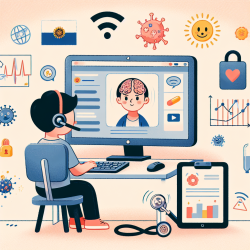The COVID-19 pandemic has highlighted numerous challenges across various sectors, including education and mental health. One critical aspect that has emerged is the significant impact of residential environments on mental health. As educational practitioners, understanding these dynamics can enhance our ability to support students effectively. Recent research published in the International Journal of Environmental Research and Public Health sheds light on this topic, providing valuable insights that can be applied in educational settings.
The Research Findings
The study titled "The Impact of U.S. Housing Type and Residential Living Situations on Mental Health during COVID-19" utilized data from the Household Pulse Survey conducted between April and November 2020. The research explored how different housing situations influenced mental health outcomes during the pandemic. Key findings include:
- Renters vs. Homeowners: Renters were more likely to experience mental health issues compared to homeowners. This is attributed to the lack of control renters have over their living environment and the constant threat of eviction.
- Building Type: Residents in multifamily housing units faced higher odds of mental health problems than those in single-family homes. The inability to maintain social distancing in high-density environments contributed to increased anxiety.
- Household Size: Interestingly, larger households were associated with lower odds of experiencing mental health issues. The presence of more family members provided social interaction and support during lockdowns.
Implications for Educational Practitioners
The insights from this research can inform how educational practitioners approach student support and online therapy services:
- Acknowledge Diverse Home Environments: Recognize that students come from varied living situations that may affect their mental well-being differently. Tailor support strategies to accommodate these differences.
- Enhance Online Therapy Services: Utilize online platforms like TinyEYE to provide flexible and accessible therapy options for students who may be struggling due to their residential circumstances.
- Create Supportive Networks: Encourage peer support groups that can offer companionship and understanding, especially for students from high-density living situations.
- Cultivate Empathy and Understanding: Train educators and therapists to be sensitive to the unique challenges faced by students from rental or multifamily housing backgrounds.
The Path Forward
This research underscores the importance of considering residential environments when addressing mental health in educational settings. By integrating these insights into practice, educators and therapists can better support their students' mental well-being during challenging times like a pandemic.
The Impact of U.S. Housing Type and Residential Living Situations on Mental Health during COVID-19










